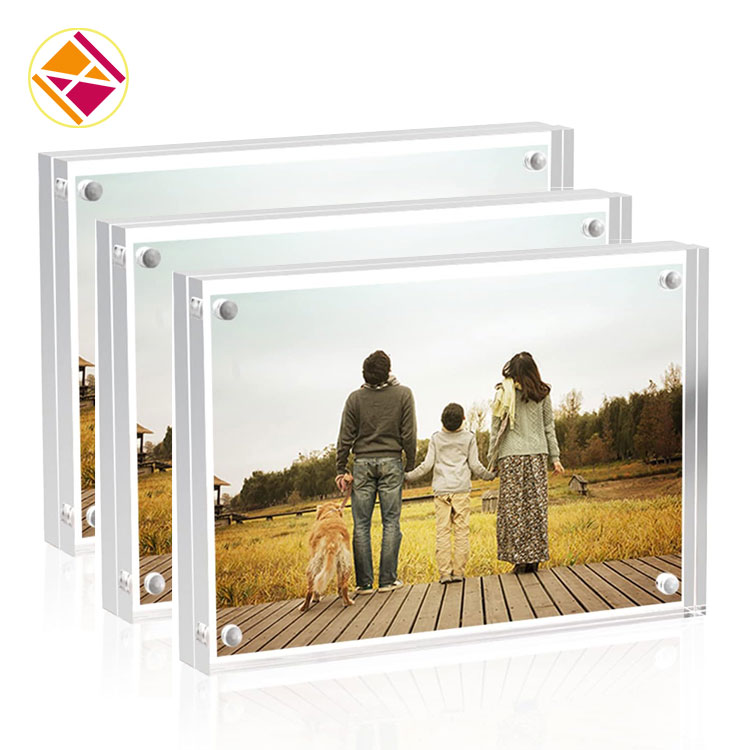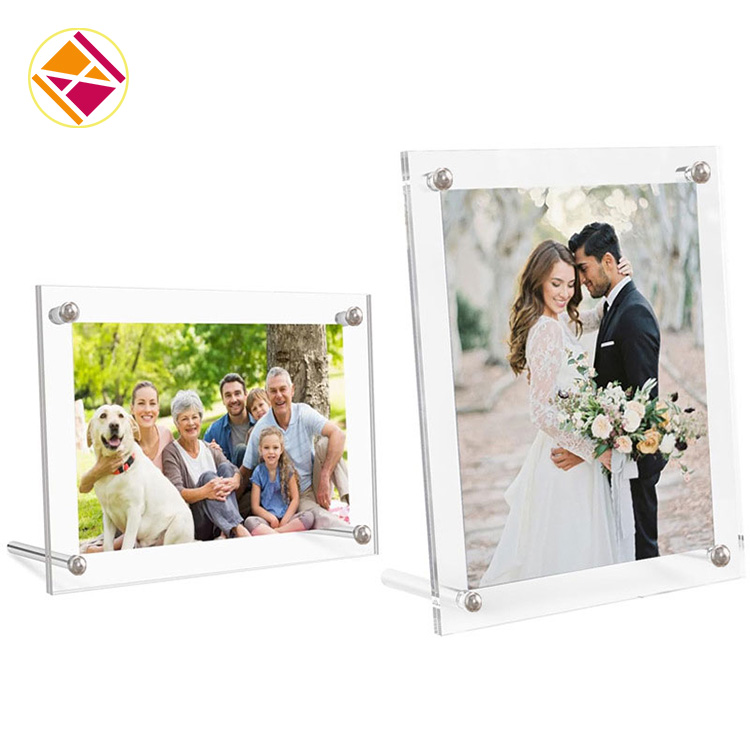What Makes Acrylic Board an Ideal Choice for Your Displays and Frames?
2025-10-29
Table of Contents
-
Why Choose Acrylic Board? (How and Why)
-
What is Acrylic Board — Parameters & Product Details
-
Acrylic Sign Holder and Acrylic Picture Frame — What and How
-
FAQs — Common Questions Answered
-
Final Thoughts — Introducing ZHIHAO & Contact Us
1. Why Choose Acrylic Board? (How and Why)
In a market saturated with materials like glass, polycarbonate and various plastics, choosing the right substrate for display, signage, framing or architectural use is critical.
How it works
The material we refer to as acrylic board is typically a sheet of Polymethyl methacrylate (PMMA), which is produced by polymerising methyl methacrylate monomers.Its manufacturing allows for high optical clarity, light-weight construction, and the possibility of forming, cutting, drilling and shaping with relative ease.
Why it matters
Because acrylic board combines clarity, durability, and formability, it stands out in several applications:
-
Clarity & transparency: Acrylic boards can transmit up to ~92% of visible light, compared to typical glass at ~80-90%.
-
Impact resistance and safety: They are much less prone to shattering than standard glass, making them ideal for high-traffic, public or children-accessible areas.
-
Lightweight: Weighing roughly half as much as glass for a given thickness, installation becomes easier and structural requirements are lighter.
-
Formability and customisation: Acrylic board can be cut, laser-engraved, drilled, thermo-formed or polished into custom shapes and sizes.
-
Weathering & UV performance: With proper grades, acrylic resists yellowing and can maintain clarity and colour fidelity in outdoor or high-exposure settings.
Because of these factors, the “why” is clear: for signage, display panels, picture frames or protective coverings, acrylic board offers performance advantages over many competing materials.
What is Acrylic Board — Parameters & Product Details
Now, let’s dive deeper into the specifics of our product offering in acrylic board — what you should expect in terms of parameters, specifications, and how our offering distinguishes itself.
Product parameters
Here is a table summarising the key technical parameters for our acrylic board product line:
| Parameter | Typical Specification | Notes |
|---|---|---|
| Material | PMMA (cast or extruded) | Cast for premium clarity, extruded for cost-efficiency |
| Sheet Thickness | 2 mm, 3 mm, 5 mm, 8 mm, 10 mm, up to 25 mm | Available in custom thicknesses on request |
| Light Transmission | ≥ 90% (clear grade) | For standard clear transparent sheet |
| Impact Resistance vs Glass | Approx. 10 × glass | Acrylic offers far greater safety margin |
| Weight | Approx. 50% of equivalent glass weight | Easier handling and mounting |
| UV Resistance / Weathering | Good (with UV-stabilised grade) | Outdoor grade with anti-yellowing |
| Fabrication Options | Laser cutting, CNC routing, thermo-forming, drilling, polishing | Custom shapes & sizes available |
| Colour / Finish Options | Clear, tinted, opaque, frosted, mirrored finish | Flexible aesthetics selections |
| Edge Quality | Polished, flame-polished, machined | Premium finish available |
| Customisation | Engraving, screen-printing, adhesive masking, protective film | Ideal for bespoke signage & display work |
What sets ours apart
-
We offer both cast and extruded acrylic board, enabling a balance between clarity and cost.
-
Our board comes with protective film to prevent surface damage during handling and installation.
-
We offer custom cut-to-size service and fabrication support (drilling, routing, laser cutting) to reduce onsite labour.
-
We provide technical documentation and quality control certificates to support specification compliance for demanding applications (retail, exhibition, architectural).
-
We are attentive to sustainability: acrylic board is recyclable and many sheets are produced with recycled content or can be reused.
By specifying the parameters above and choosing a reliable supplier, you ensure your acrylic board meets both aesthetic and functional requirements for your project.
Acrylic Sign Holder and Acrylic Picture Frame — What and How
Beyond sheet stock, two of the most popular use-cases of acrylic board in our portfolio are the acrylic sign holder and the acrylic picture frame. Let’s explore each.
Acrylic Sign Holder
What is it?
An acrylic sign holder is a fabricated accessory — typically made from clear or tinted acrylic board — designed to display signage, promotional material, menus, information boards, or directional graphics in retail, hospitality, corporate or event environments.
How is it used and why choose acrylic?
-
The clear acrylic offers virtually invisible support, allowing the sign content to appear “floating”.
-
Because the material is lightweight and impact-resistant, it is safer than glass, especially in high-traffic public areas.
-
Easily fabricated: you can have L-shaped holders, countertop stands, wall-mounted frames, freestanding display units, etc.
-
Customisable: size, thickness, edge finish, colour tint and branding (logo engraving) can all be specified.
-
For durable signage, acrylic sign holders resist fading, yellowing and grime. Combined with protective film and UV-stable material, they maintain clarity year after year.
-
From an installation point of view, using acrylic sign holders reduces structural load, simplifies mounting and allows for cleaner modern aesthetics.
Specification example for a common sign holder model:
| Feature | Specification |
|---|---|
| Sheet thickness | 5 mm clear acrylic board |
| Dimensions | 297 mm × 210 mm (A4 size) or custom |
| Finish | Polished edges, 90° laser cut |
| Protection film | Removable PE film on both faces |
| Base / stand | Integrated or separate acrylic base |
| Customisation | Logo engraving, colour tinting, UV-print |
When specifying these holders, attention to edge quality (avoiding chipping), film removal after installation and clean fabrication are key for a premium finish.
Acrylic Picture Frame
What is it?
An acrylic picture frame utilises acrylic board as the glazing (and sometimes the frame body) to display photographs, art prints, certificates or memorabilia. Because of acrylic’s clarity and lightweight nature, picture frames made with acrylic instead of traditional glass are increasingly popular.
How and why this matters:
-
Using high-clarity acrylic board ensures the artwork is presented without distortion and with minimal reflection, especially if a non-glare or matte finish variant is selected.
-
The reduced weight means larger frames can be mounted more easily on walls with lightweight fixings.
-
The robustness of acrylic makes it safer in environments like schools, offices or homes with children.
-
Fabrication options permit flush edge glazing, invisible mounting and innovative design styles (floating panels, magnetic mount, frameless mounts).
-
Combining acrylic board with mounting systems such as standoffs gives a modern, gallery-style look.
Specification example for a picture frame glazing:
| Feature | Specification |
|---|---|
| Glazing material | Clear cast acrylic board, 3 mm thickness |
| Transmission | ≥ 90% visible light |
| Frame type | Frameless floating panel, or with minimal border |
| Edge finish | Polished bevel, no sharp edges |
| Backing material | Aluminium composite panel or MDF board |
| Protective film | Yes, on both sides of acrylic |
| Custom size | Up to 1000 × 1500 mm (or larger per request) |
By aligning product parameters with installation strategy, we ensure clients benefit from clarity, safety, aesthetic appeal and longevity.
FAQs — Common Questions Answered
Q1: How do I clean and maintain acrylic board?
A1: Use a soft, lint-free cloth and mild soapy water or a cleaning solution specifically formulated for plastics. Avoid ammonia-based cleaners (e.g., standard glass cleaners) because they can cause crazing or clouding. Dry with a clean microfiber cloth. Regular cleaning preserves clarity and extends lifespan.
Q2: Why is acrylic board more expensive than some PS (polystyrene) sheets?
A2: Acrylic board offers superior optical clarity, impact resistance, weathering performance and fabrication flexibility compared with PS sheets. For example, acrylic has better gloss, smoother surface feel and higher brightness in finished products.Though the initial cost is higher, the performance benefits make it a better investment in many applications.
Q3: Can I bend or thermo-form acrylic board on site?
A3: Yes — acrylic board can be heated to its bending temperature (typically ~150-180 °C depending on thickness and grade) and formed into curved shapes with proper tooling and expertise. For best results, it is recommended to perform thermo-forming in a controlled workshop environment rather than on-site. Custom fabrication helps ensure edge finish and clarity remain optimal.
Final Thoughts — Introducing ZHIHAO & Contact Us
In summary, if you are specifying sheet materials for signage, framing, architectural glazing or display applications, acrylic board offers a compelling combination of clarity, safety, weight savings and aesthetic flexibility. With the right supplier, you gain customisation, fabrication support and quality-assured product performance.
At ZHIHAO, we specialise in supplying high-quality acrylic board solutions, tailored fabrication and full technical support. Whether you need clear stock sheet, custom cut-to-size parts, sign holders or picture frame glazing, we stand ready to assist. Contact us today to discuss your project requirements and secure a reliable material partner.






